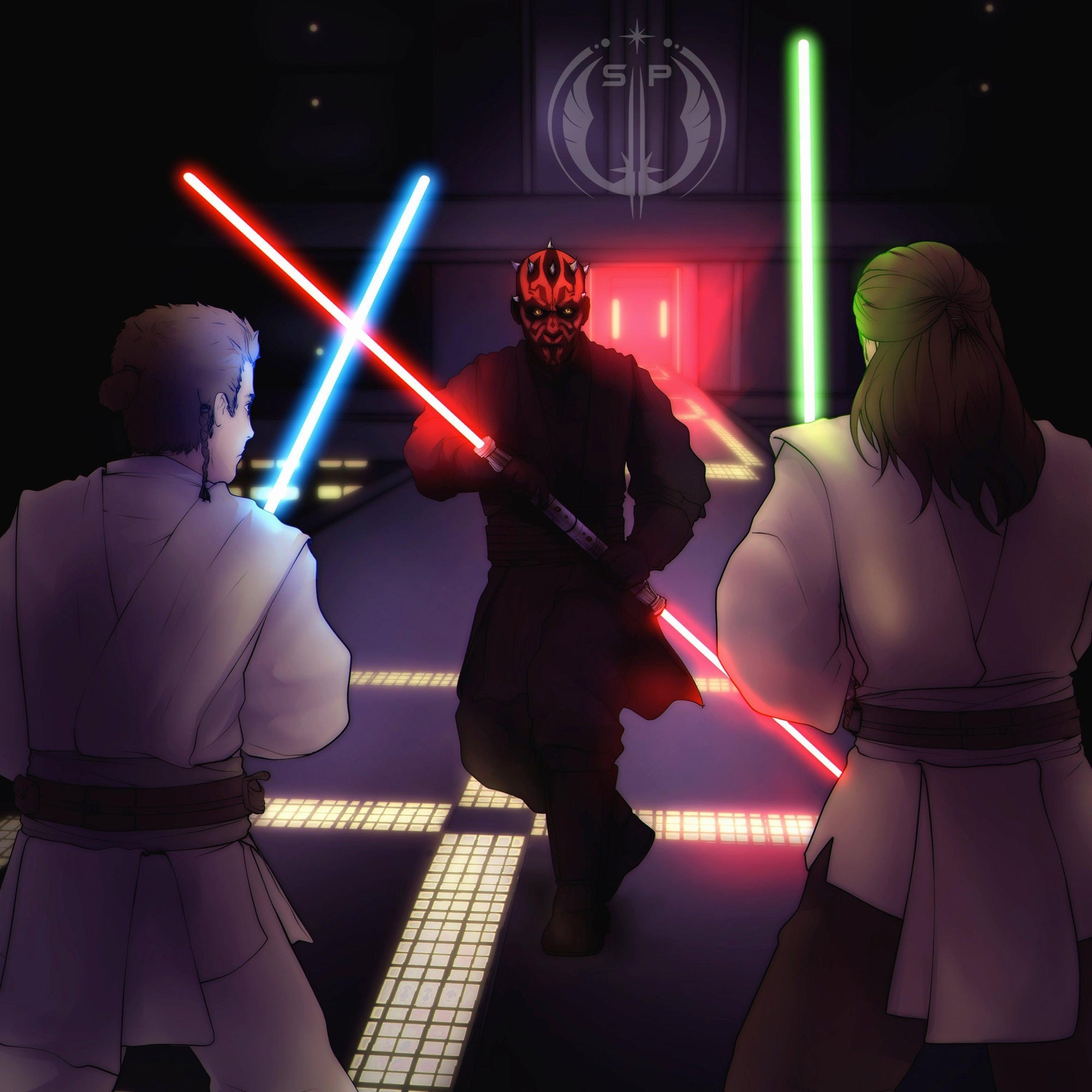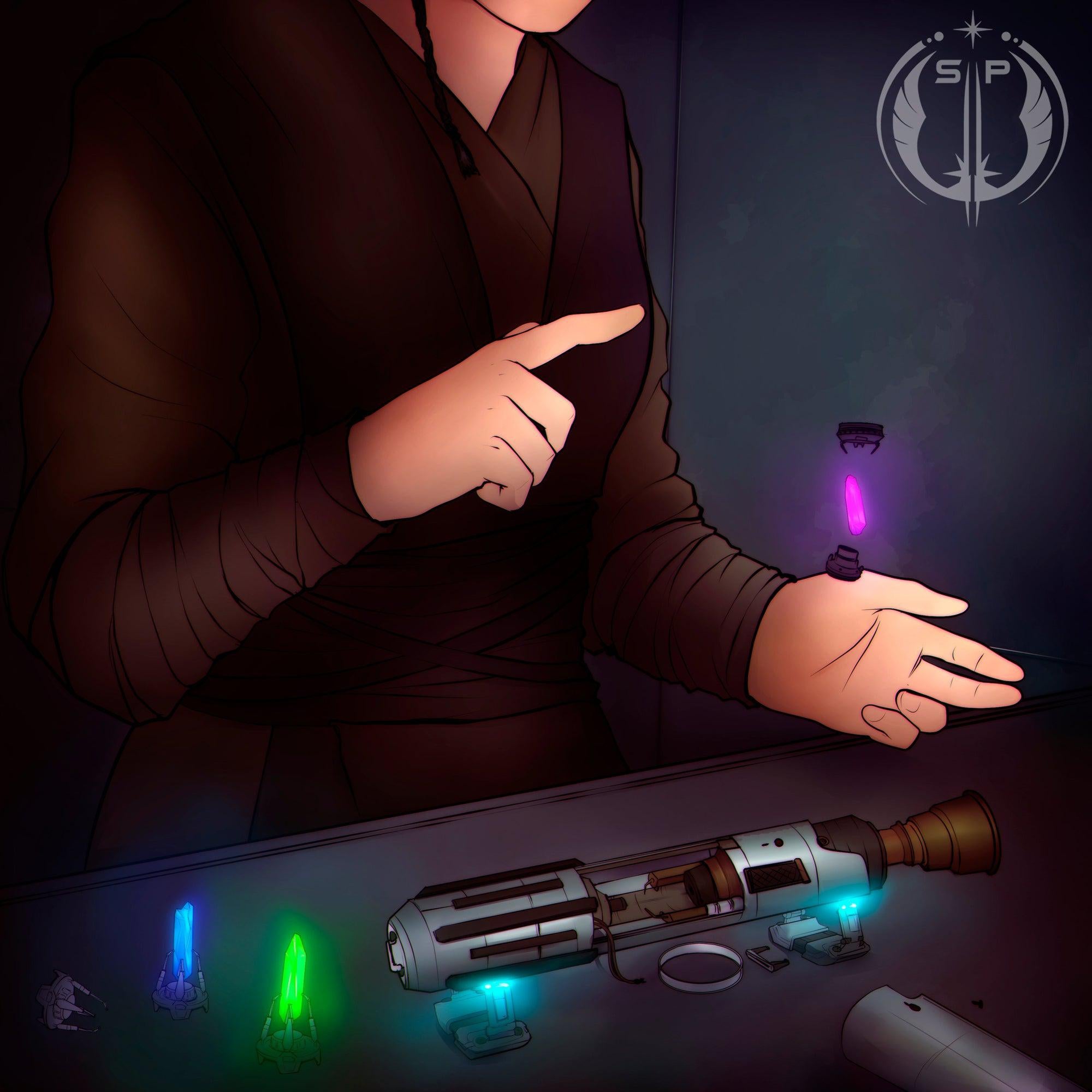Article: How to Up Your Lightsaber Dueling Game

How to Up Your Lightsaber Dueling Game
Look, we are not going to blow steam up your battle station trash compactor, but that fight scene between Qui-Gon Jinn, Obi-Wan, and Darth Maul in The Phantom Menace inspired generations of lightsaber duelists.
Say what you want about the film itself, but when audience members were treated to the force-sensitive moves of a double-bladed Sith apprentice, inspiration struck so hard that now there are entire tournaments and professional leagues based on lightsaber dueling.
That leads many to ask, where to get started? How do we develop the same powerful saber skills as our favorite light or dark side warrior?
The Art of Lightsaber Fighting
Let us get the basics out of the way first. Yes, you will need a professionally made lightsaber blade from an expert creator like us at SabersPro. We will get into the details of the requirements for this build, but let’s just say for now that your local Target is not going to do the trick.
Next, time to pick up some protective equipment. Many of the well-made lightsabers out there in the world designed for dueling pack a serious punch when they land on your body. You do not want to experience the wrath of a 6’ 3” cosplaying Yoda with a lightsaber longer than your body.
Grab some protective gloves, comfortable shoes, helmets, and padding. Don’t be afraid to purchase eye protection and mouth guards as well. A good rule of thumb is to cover the areas of your body with protective gear like people who train in Kendo (i.e. the way of the sword), or Olympic fencing.
Finally, bring along a first aid kit and make sure you have plenty of room to get started. As for the actual combative moves, that will take some research.
Always, always, always, read the rules of different lightsaber dueling battles first. If you are not part of a club or organization, keep it simple. No hits to sensitive areas like the groin, throat, or face, and when someone does score a point, the other player should always acknowledge it openly.

A Lightsaber Strike vs. A Hurricane
There are numerous online organizations and free video resources to learn how to fight with a lightsaber. Most of these are based on sword techniques ranging from the Dark Ages of England to the mountain regions of feudal Japan and everything in-between.
You want to start with basic footwork, simple strikes and combinations, and using a single-bladed lightsaber. Learning how to move with a blade is way more important than killing your opponent on day one.
Your weapon needs to be an extension of your body. So as you move through space and time, allow the lightsaber to fluidly glide with your momentum.
Once you’ve got the basics down, time to up your game with some of the more advanced moves. Keep in mind that the best way to learn these techniques is by actually practicing them with a friend or partner. It also helps to video record your moves so you can get a better perspective on your actual stance, footwork, and presentation.
Some of the more well-known advanced moves include:
- The Hurricane is a blindingly fast series of cutting and defense techniques involving a slight jump and multiple slices.
- Defense Cut is a subtle cut that starts in a defensive stance and draws the opponent close as you circle your blade forward into a powerful circle cut.
- Dragon’s Tail is a captivating bit of swordplay that slices through the shoulder and comes back across the opponent's lower limbs.
- The Tempest involves wide, sweeping motions of your blade that create openings in your opponent’s defense.
There are so many more like The Charley, Davenriche, Lightening, and of course Obi-Ani that this list can get out of hand quickly.

Where to Learn Lightsaber Dueling Techniques
We could talk about perfect lightsaber techniques all day long, but without the right mentor, you will not get good at it. There are numerous online academies and leagues that offer instruction in the ways of the force and tournaments that you can participate in and earn rank.
Some of the better-known organizations include
- LudoSport - a freeform fighting style based on European techniques. It is located primarily in Europe and emphasizes the ability to move without as much equipment. They focus strikes on every part of the body, including the face, so be prepared for a little rough and tumble learning from the beginning.
- TSL (The Saber Legion) - a US-based organization with a lot of gear to keep you protected and strikes that can land anywhere except the throat, groin, and fingers. They get a decent amount of face time with major media like The Nerdist and have a lot of video content.
- LSL (Lightspeed Saber League) - a Southern California club that has grown to other parts of the US with a thinner saber construction and style. This is closer to fencing, but with some slashing you’ll appreciate. They have a decent online self-learning program for beginners.
- FFE-ASL/TPLA - this is a French-based organization that recognizes lightsaber dueling as a sport. This is the most like fencing out of the rest and has intricate point-based scoring. There are a few schools in the US and a very active YouTube presence.
Selecting Your Lightsaber
Now for the fun part, finding that perfect lightsaber for your next dueling experience. Some organizations may have size requirements based on acceptable conditions during their duels. In general, unless you have a very liberal team of fighters, you are looking for a standard single-bladed lightsaber. When you shop, pay special attention to:
- Weight - duels can last for many minutes, and the weight of a well-made saber can feel heavy in your hands and on your wrist after a while. You are looking for something light enough to not slow you down while fighting but heavy enough so you can feel the power of the sword as you cut. Light blades are thinner and allow more agility. Heavy blades are thick and feel like they cause more damage when landing a strike.
- Balance - a quality lightsaber should have the balance of a quality slicing knife. You do not want all the weight in the hilt. Shoot for finding a balance where the meeting point of the blade and hilt rests on your outstretched finger and only dips slightly towards the hilt.
- Comfort - so many people seek out delicately made or intricate designs on their lightsaber hilts, never fully realizing these can hurt your hand as you fight. Keep it simple, smooth, comfortable, and with materials that allow you to maintain a grip while wearing gloves.
- Durability - this is a big one. Only work with quality lightsaber makers like those at SabersPro. A poorly made lightsaber can fail you in the middle of a duel. Then you are done for - figuratively and literately.
- Blade Length/Design - this will be primarily up to the organization you are working with. Some allow duel blades, multi-blades, and other equipment that can be pretty long. In general, you are looking for a blade between 24” and 36”. Once you get a feel for your fighting techniques, you can always upgrade to emoting more customized.
Wrapping it Up
We could say so much more about getting started with lightsaber dueling that it could probably fill a book series. The most important thing is staying safe, practicing good technique slowly at first, and having fun. There is a vibrant community of lightsaber dueling enthusiasts around the world, happy to share their knowledge and expertise with you.
If you are ready to find a quality made lightsaber for your collection, start with the incredible products from SabersPro. We have many customized lightsabers for dueling, display, and cosplay events. Check out our store and stay safe out there. Whether you are fighting with the Sith or Jedi, just be sure to keep your head on straight and use the force.

Leave a comment
This site is protected by hCaptcha and the hCaptcha Privacy Policy and Terms of Service apply.